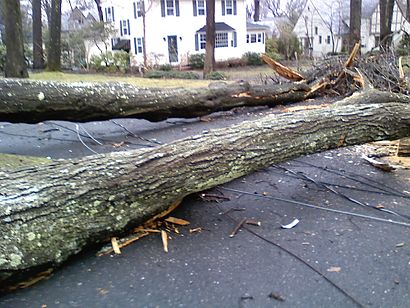Tips for Tree Removal After a Hurricane
 Hurricane Sandy left millions of people without power and homes. The devastation is still being assessed and everyone is working hard to resume life. One of the best ways to start the transition back to normalcy is to clean up your property.
Hurricane Sandy left millions of people without power and homes. The devastation is still being assessed and everyone is working hard to resume life. One of the best ways to start the transition back to normalcy is to clean up your property.
With hurricane wind speeds topping 90 mph in the state, thousands of New Jersey trees have been ripped out of the ground and tossed on their side. Massive trees are a major obstacle in post-hurricane cleanup.
If you’re interested in hiring us to help in your cleanup efforts, please contact us. In the meantime, here are some helpful tree removal tips.
Assess the fallen tree
Before embarking on any removal efforts, you should first fully assess the damage inflicted by the tree. If it landed on your property and car, it’s important that you first contact your insurance company to file a claim. Insurance companies will occasionally pay for removal if the damage is extensive. If the tree did not fall on anything, you will likely be responsible for cleaning it up.
Also be aware of electrical hazards. Any trees on top of electrical wires should not be touched. Notify your electric company immediately because the wires might still be live.
Determine the type of removal
Not all tree removals are the same. While some trees probably have been completely uprooted, others might be leaning to the side or have branches dangling. Small branches can easily be pruned, but larger branches should be handled by professionals. Post-hurricane trees can be volatile, so you should leave any potentially dangerous situations to professionals. Only consider doing something yourself if the tree is completely down.
Use proper equipment
For removing a downed tree, you will need a chain saw and safety gear, including gloves, a helmet, protective glasses, ear plugs and more. Remember to fully follow chain saw safety rules, which you can find here.
Work outwards in
The key to removing a fallen tree is to start with the outside branches. Cut the limbs and roots into smaller lengths, so you can remove them. You should be left with only the trunk once you’re done.
Cut up the trunk
Next you should cut up the trunk into manageable pieces, depending on how thick it is. You will also likely need someone to haul it away, so the size of the chunks will depend on that.


